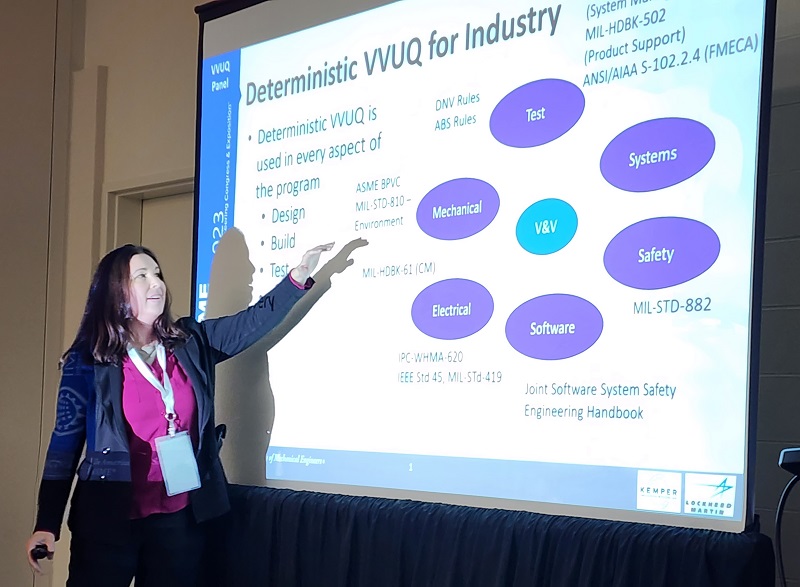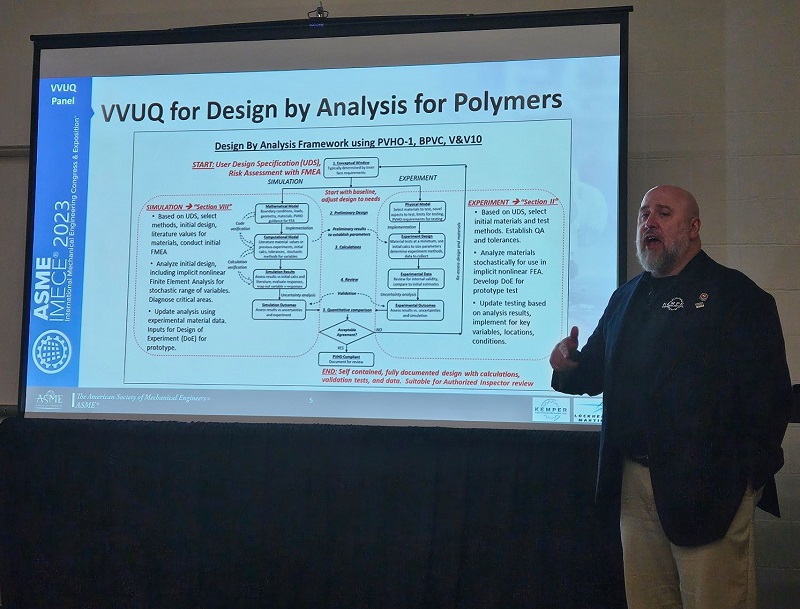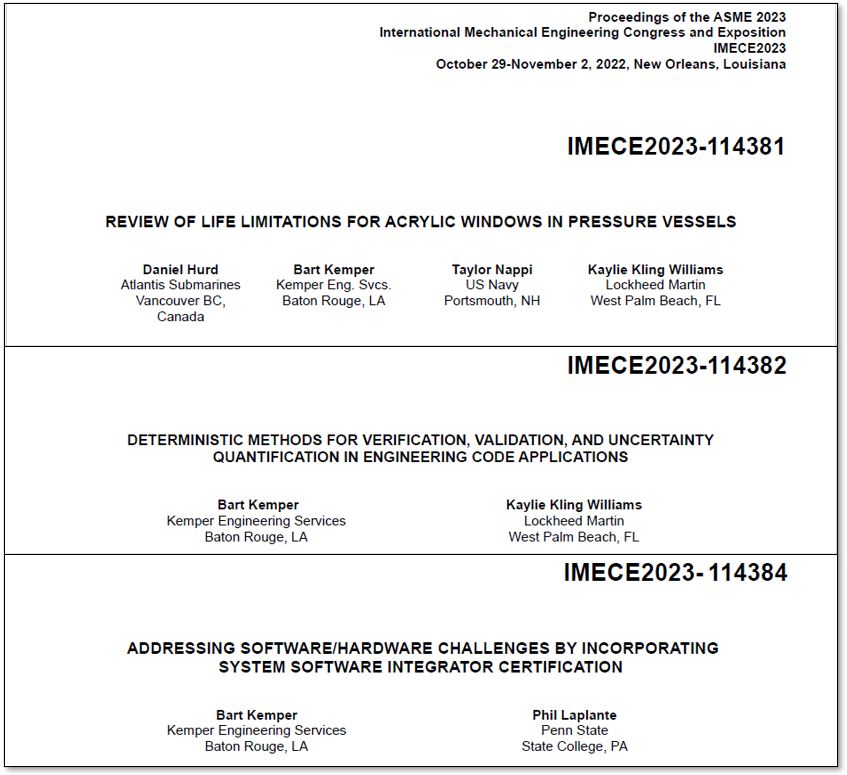Kemper Engineering Services made a strong showing at this year’s ASME International Mechanical Engineering Congress and Exposition (IMECE 2023), held in New Orleans, Louisiana. While Krista and Bart had to miss the first few days to support client needs, they stayed busy for the last two days presenting three papers Bart co-authored and participating in featured panel discussion.
The first paper was “Addressing Software/Hardware Challenges by Incorporating System Software Integrator Certification” by Bart Kemper with Phil Laplante (Penn State). This outlined the need for a Systems Software Integrator (SSI) as a certified professional when the public’s safety, health, and welfare is at risk. The SSI is an existing best practice used by key industry leaders that can be used more widely to mitigate risks associated with software controlling systems. The SSI works with the project manager to develop software requirements, integrate and test the software in the system, and be the reporting authority for requirements such as Software Bill of Materials (SBOM) and the newly required Artificial Intelligence Safety Test. In the proposed SSI role, the SSI provides the project engineer the SBOM and validates software updates during commissioning and into operations & maintenance. This builds upon previous work in AI, recognized by IEEE’s journal COMPUTER as well as the National Society of Professional Engineers. Krista Kemper will be traveling later in the month to NICET headquarters to be part of the Job Task Analysis for this new certification. The SSI is being developed to address issues such as the 737 Max crashes, software supply chain vulnerabilities, issues with autonomous vehicles, concerns with artificial intelligence, and other ways software can impact the public’s safety, health, and welfare.
“Review of Life Limitations for Acrylic Windows in Pressure Vessels” was presented by Daniel Hurd (Atlantis Submarines) with Bart, Kaylie Williams (Lockheed Martin) and Taylor Nappi (US Navy Deep Submergence). Daniel, Kaylie, and Bart are all members of the ASME Pressure Vessels for Human Occupancy (PVHO) codes & standards committee and all four are part of the Design By Analysis task group. This is part of the long-term efforts to develop a Design By Analysis process for polymers in order to expand the current use of acrylic, polycarbonate, and other polymers as engineering structural materials. While a conventional submarine window is locked into a set life based on the requirements of the ASME PVHO-1 safety code, the Design By Analysis work is about incorporating modern engineering and material science to provide a wider range of applications.
Bart presented with Kaylie Williams again for “Deterministic Methods for Verification, Validation, and Uncertainty Quantification in Engineering Code Applications.” This paper makes the argument that the use of Finite Element Analysis (FEA), Computational Fluid Dynamics (CFD), Discrete Element Modeling (DEM), and other forms of computer models should use some form of VVUQ, particularly when it is outside the prescribed limits of publish codes and standards. Not only does this address the issues of how reliably the computer modeling and simulations were applied, it goes towards establishing a measure of standard of care as part of engineering professionalism and ethics. It builds upon the paper he presented at the VVUQ Conference in May.
Finally, Bart and Kalie were then part of the panel session on Verification, Validation, and Uncertainty Quantification (VVUQ) Engineering Standards in Academia, Government Laboratories, and Industry led by Kevin Dowding (Sandia). Kevin is the chair for ASME VVUQ20, Computational Fluid Dynamics and Heat Transfer. Bart is a member of VVUQ 10, Solid Mechanics. This panel covered the current state of VVUQ development, including the new group ASME VVUQ 70, Machine Learning and Artificial Intelligence, which Bart is a member of. There was a general consensus that while the “gold standard” of traditional VVUQ is needed for high risk or highly novel applications that are well outside traditional engineering, there is the need for some sort of abbreviated or “deterministic” form of VVUQ for engineering work that is outside codes and standards, such as OceanGate’s Titan submersible.
The presentations were well received and appear to be moving the needle in several vital areas. The papers will be published as part of the IMECE proceedings.

Kaylie Kling Williams of Lockheed Martin talks about how her team uses VVUQ at all phases of their work.



Recent Comments